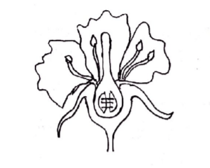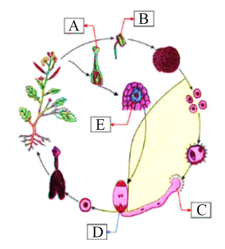MEDIUM
Earn 100
Write a brief note on zoophilous, hydrophilous and entomophilous flowers.
Important Questions on Sexual Reproduction in Flowering Plants
EASY
(fertilization, germination, regeneration, pollination)
MEDIUM
EASY
EASY
Write the two events involved in the sexual reproduction of a flowering plant.
Discuss the first event and explain its types.
EASY
EASY
Write the two events involved in the sexual reproduction of a flowering plant.
Mention the advantages and disadvantages of that event.
MEDIUM
EASY
Draw the given diagram and label the parts.

MEDIUM
What is the process of reproduction in amoeba? What are the advantages of sexual reproduction over asexual reproduction?
MEDIUM
EASY
EASY
The diagram represents the lifecycle of angiosperm. Choose the correct combination of labelling?

HARD
HARD
Write the changes that occur in the age group to years in boys.
EASY
MEDIUM
HARD
HARD
a) Name the structures A to C.
b) What has caused structure B to grow out of structure A?
c) Briefly explain how the structure B carries out its function.
d) What happens after structure B reaches its destination?

MEDIUM
MEDIUM

